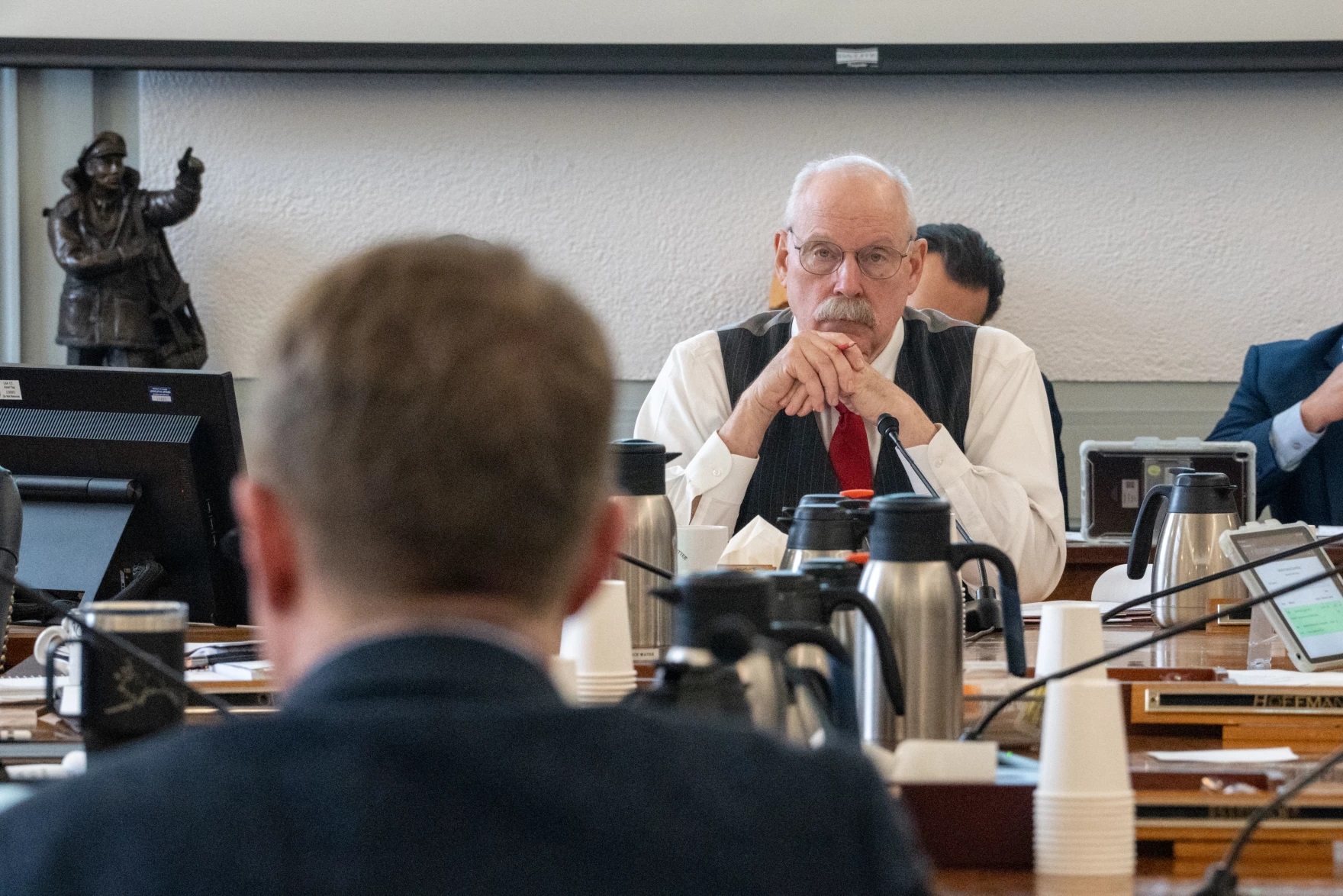
The Alaska Senate rolled out its first draft of the state’s operating budget Wednesday. The budget includes a roughly $1,300 Permanent Fund dividend for residents, plus about $175 in an energy relief check. The Senate’s PFD proposal earmarks 25% of this year’s drawdown on the Permanent Fund for the state’s annual payout.
That is substantially lower than the roughly $2,300 payout passed by the House. The Senate’s operating budget chair, Sen. Bert Stedman, R-Sitka, said the state has been “blessed” the last couple of years by high oil prices. But Stedman warned that high prices won’t last forever.
“I would suggest that we use a reasonable dividend expectation that can be attained going forward so we don’t put ourselves in a position where we have fairly strong dividends and we get up one year and there is no dividend. That’s what I want to avoid,” Stedman told reporters on Tuesday.
Stedman and other members of the bipartisan Senate majority have warned in recent weeks that the larger dividend passed by the House doesn’t leave room for agreed-upon spending on capital projects or recently-passed bills.
Meanwhile, Gov. Mike Dunleavy, who has made large dividends a key part of his platform, said on the statewide call-in show Talk of Alaska Tuesday that he’d prefer a dividend above $2,000. He suggested spending a portion of the state’s roughly $2.8 billion savings account known as the Constitutional Budget Reserve.
“Well, the CBR’s got money in it, too,” Dunleavy told host Lori Townsend. “And during these difficult inflationary times, I think we have to give due consideration to what people are going through, as the caller kind of alluded to, but certainly the Legislature is going to make their decisions. And again, I know it’s, from all indications, it’s not going to be a full PFD. Hopefully it’s somewhere north of $2,000 to help people.”
House Speaker Cathy Tilton, R-Wasilla, said Tuesday she’d like the biggest dividend lawmakers can provide, but she said she’s not sure that spending from the savings account will be possible.
“I think that the bigger question would be, would we be able to go into the Constitutional Budget Reserve, and have the votes available for that?” Tilton said in a news conference.
It takes a three-quarters vote in the House and Senate to spend from the account. That means the Republican-led majority couldn’t do it alone, and they may not get support from their colleagues — minority-caucus Democrats and independents spoke out against what they saw as an unbalanced budget as it passed the House earlier this month.
There was a similar debate last year between the House and Senate over the size of the PFD and whether to spend from the savings account. In the end, the House voted to adopt the Senate’s budget after negotiators added some $34 million in projects to the spending plan.
That led lawmakers this year to agree on a budget timeline with specific checkpoints. Lawmakers have stuck to the plan so far.
The Senate’s draft budget also addresses a disputed funding shortfall that threatens federal grant funding. Earlier this year, the federal Department of Education said the state had underfunded school districts in violation of a first-of-its kind grant requirement attached to a COVID recovery bill. The Senate’s draft budget would send some $11.9 million to two Alaska school districts to make up for the shortfall.
The Dunleavy administration has resisted the federal government’s call to pay up, saying the state’s funding formula did not change over the life of the grant. Though a policy expert recently told senators that many states initially failed to comply with the requirement, Alaska is the only state that has yet to resolve the issue.
The budget also includes $175 million in one-time aid to school districts, equivalent to a $680 increase in per-student funding. That provision was also included in the House budget.
Senate leaders say they hope to pass a final budget by early May. It’ll then likely go to a conference committee to work out the differences between the House and Senate.
Eric Stone covers state government, tracking the Alaska Legislature, state policy and its impact on all Alaskans. Reach him at estone@alaskapublic.org.




